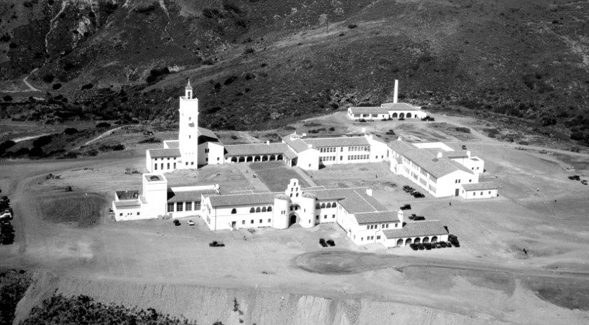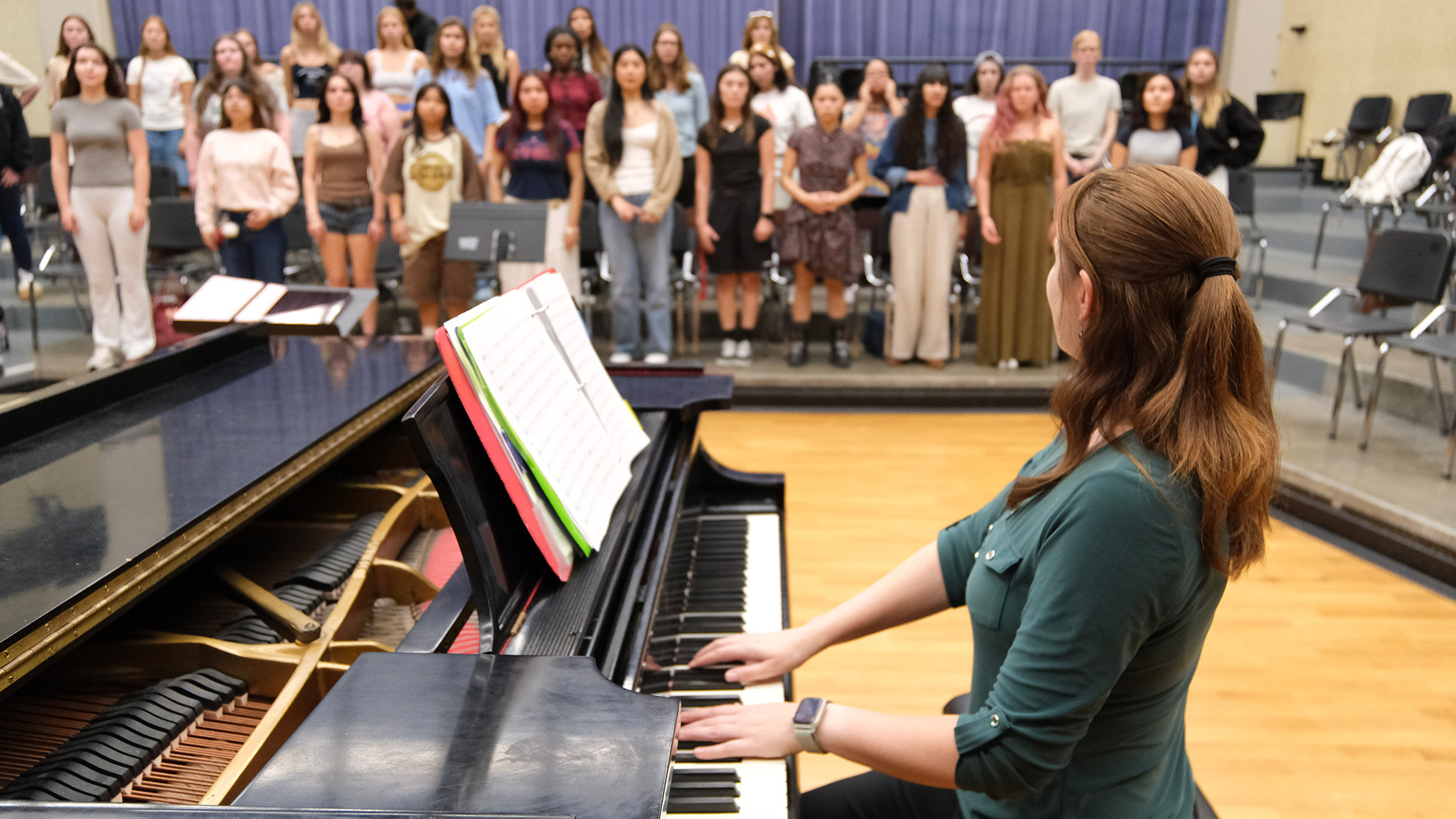Celebrating 120 Years in 120 Days
San Diego State Universitys 120th anniversary festivities begin with Templo del Sol on Aug 25.

This year, San Diego State University celebrates the 120th anniversary of its founding as a teacher training school. Now a top public research university, SDSU is an economic driver of San Diego, a source of the region's workforce and a community of faculty, staff and students committed to serving the city.
San Diego State University has designated a 120-day period this fall to celebrate its one dozen decades of commitment and service to the San Diego community.
120 Years of Leadership kicks off Friday, Aug. 25, at Templo del Sol. Under the night sky, new students will take part in a time-honored custom that marks their first official night as Aztecs. Templo del Sol begins at 9 p.m. with the ceremonial “Hello Walk” through the Hepner Hall arches, witnessed by current students, alumni, faculty and staff.
The walk symbolizes the beginning of their journey as Aztecs for Life, and this year’s students will join a 120-year tradition of excellence in student success, scholarship, creative endeavors and community engagement.
Founded in 1897 as San Diego Normal School with seven faculty members and 91 students—most of them aspiring teachers—the SDSU of today is a public research university enrolling 36,000 undergraduate, graduate and Ph.D. students guided by about 5,900 faculty and staff.
Hundreds of thousands have received degrees from SDSU since the first graduating class of 23 women and three men. Many Aztecs put down roots in their community, leading San Diego in business, politics, education, health, engineering, communication and telecommunication, sciences, the arts and the volunteer workforce.
"SDSU's history and the history of San Diego have been intertwined for 120 years," said Dan Montoya, assistant vice president of SDSU Alumni. "This celebration is a reminder of the university's foundational role in our community and our state."
Explosive growth
San Diego State University is the oldest institution of higher education in San Diego and one of the county’s largest employers. The evolution of the early Normal School into San Diego Teachers College occurred in 1921 under President Edward Hardy.By that time, the campus had moved from downtown San Diego to University Heights. Ten years later, SDSU relocated once more to its permanent home atop Montezuma Mesa. Hepner Hall, the iconic centerpiece of the new Quad, was a fusion of Spanish Colonial and Mission Revival architectural styles.
From 1935 to 1952, SDSU flourished under its third president, Walter Hepner. The university’s physical footprint almost doubled from 120 to 272 acres; academic offerings increased from 404 to 1,431 classes; and several new buildings and structures were erected with funds from the Works Progress Administration. During this time, the university emerged as a national leader in educating veterans—a role it has expanded through the decades.
Hepner’s successor, Malcolm Love, served from 1952 to 1971, overseeing enrollment growth to 30,000 students, as well as the establishment of 52 graduate programs and the first joint doctoral programs in California. Love was president when SDSU created the nation’s first Department of Women’s Studies and one of the first academic departments devoted to African American studies and Chicana/Chicano studies. The university also conferred the first honorary doctorate awarded in the California State University system to President John F. Kennedy in 1963.
Committed to research
As Professor Seth Mallios notes in his publication of the university’s history, “Hail Montezuma,” current faculty members carry on a venerable SDSU tradition: "they engage in their own active research agenda and they involve their students in these pursuits.”President Thomas B. Day (1978-1996) is credited with championing the teacher-scholar model, a standard that led to sharp increases in federal and state funding of faculty research. But the university’s commitment to research-based scholarship dates back decades.
In 1967, San Diego State College awarded the first joint doctoral degree in the California State University system (in chemistry), and in 1974 it formally received the mantle it had long deserved: The college became San Diego State University.
SDSU’s research and problem-solving focus strengthened under presidents Stephen Weber (1996-2011) and Elliot Hirshman (2011-2017). In the past five years, the university has hired more than 220 new tenure-track faculty with proven research and teaching credentials.
A community effort
Throughout SDSU’s 120-year history of growth and advancement, there has been one constant—the loyalty of the Aztec family. More than 74,000 alumni, community members, faculty, staff, parents and students came together over the last decade to support the university through The Campaign for SDSU.The campaign raised $815 million for student scholarships, faculty support and enhanced academic programming. It also increased SDSU’s endowment, which is invested to foster financial growth for decades to come.
As alumni and donors reconnected with SDSU, the campaign also became a conduit for building relationships between new graduates, older graduates and current students—and strengthening the 120-year ties between SDSU and the San Diego community.
Thanks to Seth Mallios and “Hail Montezuma” for the historical information in this story.



